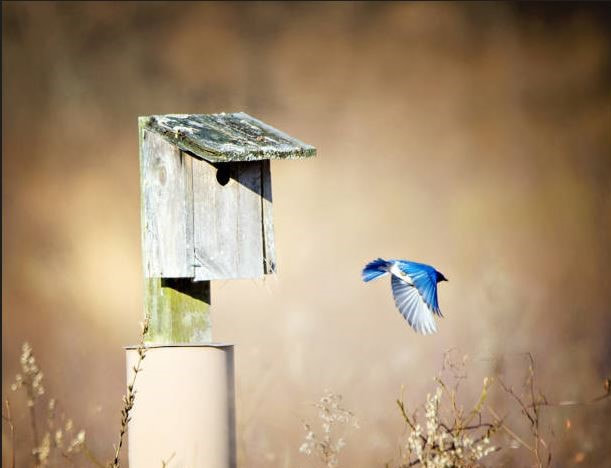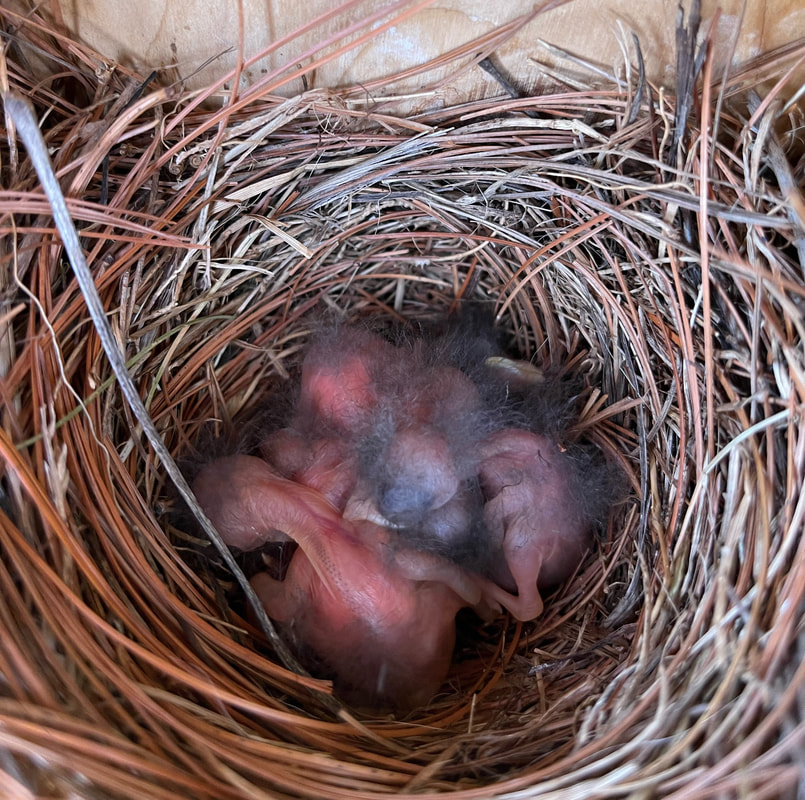|
Why Do Eastern Bluebirds Need Your Help?
Bluebirds suffered considerable - almost unrecoverable - losses in the twentieth century as a result of the injudicious introductions of house (English) sparrows and European starlings to New York City - and ultimately America - in the 1800s, and the toxic toll DDT exacted on many songbirds and raptors for decades beginning in the 1940s. Further complicating the bluebird's plight, particularly in Pennsylvania, has been the loss of open spaces to development or reforestation.
Pennsylvania's bluebird population was probably its strongest ever in the late 1800s and early 1900s, before starlings and house sparrows became too plentiful, and before the advent of DDT. It was the period just after large sections of the Commonwealth's forests had been logged off and a time when farms covered about two-thirds of the state. Pennsylvania's human population was half what it is today. Combined, that translated into lots of open space - preferred habitat, few environmental issues and limited competition with other cavity nesters. Bluebird paradise. With time, though, America's bluebirds began to lose their grip. The European transplants began to dominate the nesting cavities bluebirds preferred. DDT and other harmful pesticides hampered reproduction until they were banned nationally in '70s. And Pennsylvania's open spaces slowly, but steadily, were reclaimed by trees, or worse, buildings. The bluebird's perfect world was slipping away, and it was helpless to reverse the troubling tailspin it found itself in. Bluebirds needed help competing with the more aggressive European species, and American ornithologists soon recognized this problem. By the 1930s, a national movement had started to remedy the bluebird's "homeless" status. But whatever gains were made for bluebirds likely were offset by the increased usage of DDT - and a general disregard for many environmental concerns - during the war years of the '40s. "Bluebirds were in deep trouble in the mid 1900s, just before America's environmental awaking in the '60s," explained Dan Brauning, Pennsylvania Game Commission Wildlife Diversity Section chief. "Just about everything seemed to be working against this handsome, and extremely popular songbird. But the situation started to improve for bluebirds in the 1960s and '70s as more and more Americans rallied to help by placing nest boxes in their backyards and creating bluebird nest box trails." - Text by Joe Kosack, Wildlife Conservation Education Specialist taken from PA Game Commision Eastern Bluebirds page |




